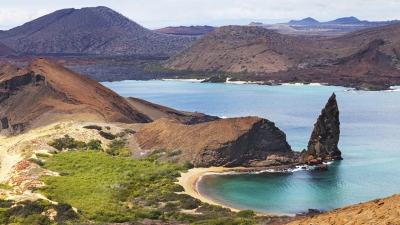
Galapagos Islands are island group of the eastern Pacific Ocean, administratively a province of Ecuador. The Galapagos consist of 13 major islands (ranging in area from 5.4 to 1,771 square miles [14 to 4,588 square km]), 6 smaller islands, and scores of islets and rocks lying athwart the Equator 600 miles (1,000 km) west of the mainland of Ecuador. Their total land area of 3,093 square miles (8,010 square km) is scattered over 23,000 square miles (59,500 square km) of ocean. The government of Ecuador designated part of the Galapagos a wildlife sanctuary in 1935, and in 1959 the sanctuary became the Galapagos National Park. In 1978 the islands were designated a UNESCO World Heritage site, and in 1986 the Galapagos Marine Resources Reserve was created to protect the surrounding waters. The Charles Darwin Research Station on Santa Cruz (Indefatigable) Island promotes scientific studies and protects the indigenous vegetation and animal life of the Galapagos.
The Galapagos Islands are formed of lava piles and dotted with shield volcanoes, many of which are periodically active. The striking ruggedness of the arid landscape is accentuated by high volcanic mountains, craters, and cliffs. The largest of the islands, Isabela (Albemarle), is approximately 82 miles (132 km) long and constitutes more than half of the total land area of the archipelago; it contains Mount Azul, at 5,541 feet (1,689 metres) the highest point of the Galapagos Islands. The second largest island is Santa Cruz.
The climate of the Galapagos Islands is characterized by low rainfall, low humidity, and relatively low air and water temperatures. The islands have thousands of plant and animal species, of which the vast majority are endemic. The archipelago’s arid lowlands are covered by an open cactus forest. A transition zone at higher elevations is covered with a forest in which pisonia (a four o’clock plant) and guava trees dominate, and the moist forest region above the transition zone is dominated by a Scalesia forest with dense underbrush. The treeless upland zone is covered with ferns and grasses.
Credit : Britannica
Picture Credit : Google




